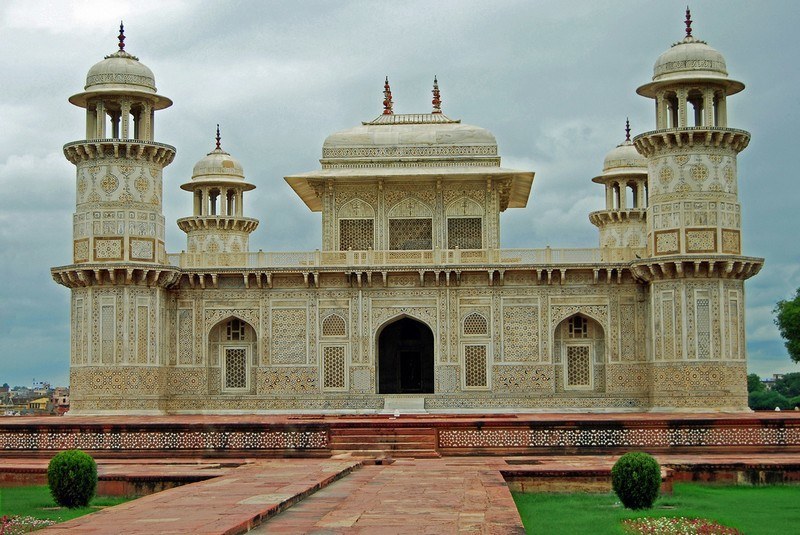The Tomb of I’timād-ud-Daulah, often referred to as the “Baby Taj Mahal”, is a beautiful Mughal mausoleum located in Agra, India. It’s considered a precursor to the Taj Mahal and is often seen as a draft or inspiration for the more famous monument.
Key Facts:
- Commissioned by: Nur Jahan, the wife of Mughal Emperor Jahangir.
- Built for: Mirza Ghiyas Beg, Nur Jahan’s father, who held the title I’timād-ud-Daulah (Pillar of the State).
- Construction period: 1622–1628 CE.
- Location: On the eastern bank of the Yamuna River, in Agra.
Architectural Significance:
- First Mughal structure made entirely of white marble, unlike earlier red sandstone constructions.
- Features intricate pietra dura inlay work (semi-precious stones in marble), which would be perfected in the Taj Mahal later.
- Delicate jalis (latticed screens), geometric and floral motifs.
- Symmetrical layout in a classic charbagh garden style (four-part garden divided by water channels).
Why It’s Called the “Baby Taj”:
- Though much smaller than the Taj Mahal, its design elements—marble surfaces, inlay decoration, and symmetry—are very similar.
- Considered an architectural bridge between early Mughal tombs (like Humayun’s Tomb) and the Taj Mahal.
Visitor Tips:
- Less crowded than the Taj Mahal—great for peaceful exploration and photography.
- Especially beautiful during early morning or late afternoon light.
- Nearby attractions: Mehtab Bagh, Agra Fort, and of course, the Taj Mahal.
Would you like a suggested itinerary for a visit or a comparison with the Taj Mahal?
